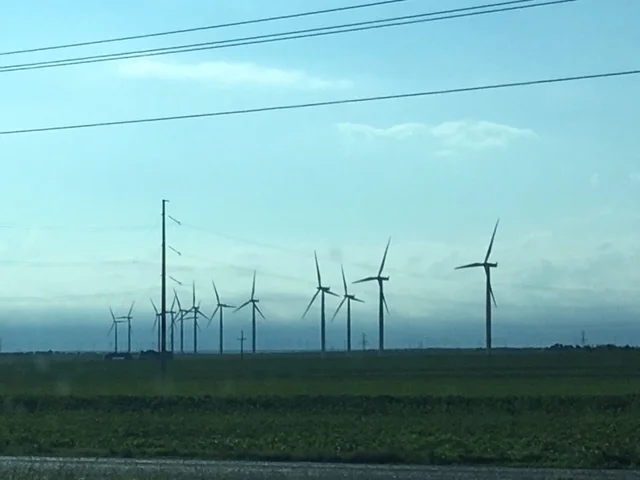TEXAS HARNESSES HOT AIR
BIG SPRINGS, TEXAS — This two-lane blacktop passes through one of the richest oil fields on earth — the broad, flat Permian Basin. But Highway 180 also divides the future.
One one side of me stands the Age of Oil, those equine pumps that symbolized boom times in cities like Odessa and Midland. As I speed past, however, I note that all but a few of the old horses are still. Dead. On the other side of Highway 180 stands the Age of Renewables.
Twenty, fifty, a hundred towering white wind turbines are turning in the Texas gales. A few miles on, I pass another wind farm, another 100 turbines. And another. And another. Texas has seen the future and it blows.
Though it will always be famous for oil, Texas is America’s largest producer of wind energy. More than 10,000 wind turbines, from the Panhandle to the Gulf, are spinning slowly in the breeze. But Texas is not just leading America into the renewable future. If Texas were a country, it would rank fourth in the world in wind energy.
How did America’s leading oil state become America’s wind farm? Profit. Seems there’s gold in them thar breezes. Wind is a cash cow for farmers who can lease a small part of their land and earn $3,000 or more per year per turbine. Wind turbines take up little space, need little maintenance, and are as clean as the air in these parts. As a final boost, no one here complains that wind turbines ruin the view because there isn’t much of one.
But farmers didn’t face the future alone. Back in the 1990s, Texas wind got help from the notoriously conservative state legislature in Austin. Their first step was to deregulate electric utilities, making some 50 competing companies. Then the legislature mandated a fixed percentage of renewables for each. The first of two bills was signed in 1999 by Governor George W. Bush.
Since then, Texas wind has whipped up profits and pumped out gigawatts. Work is now underway on a Texas wind farm that will power 168,000 homes. Today, more than 20 percent of all energy produced in this state of oil and gas and coal is pure wind. Last July, wind passed coal in total energy output here. And with some 25,000 jobs in the wind sector, cowboys and cowgirls have taken note.
Lubbock, Texas now has a Windmill museum (above) paying tribute to the old windmills that used to pump only water. And when the winds blow strong and steady, some Texas utilities offer their customers a rare commodity — free electricity after 9 p.m. As one utility company’s TV jingle boasted, “Every morning, every evening, ain’t we got fun?”




